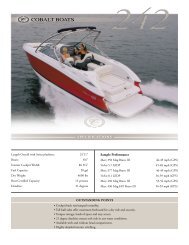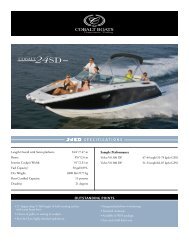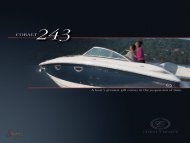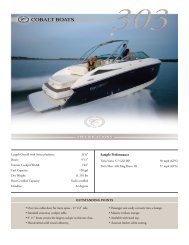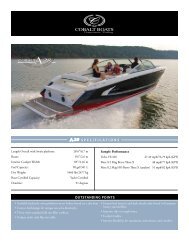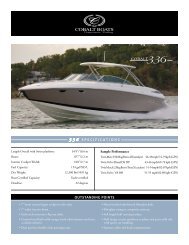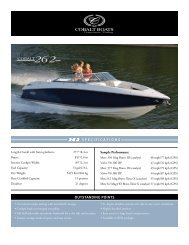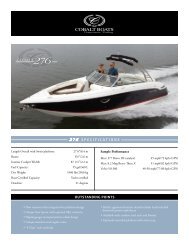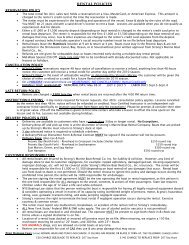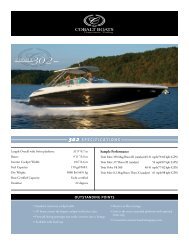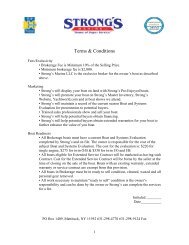Stern To Docking & Narrow Channel Maneuvering
Stern To Docking & Narrow Channel Maneuvering
Stern To Docking & Narrow Channel Maneuvering
- No tags were found...
You also want an ePaper? Increase the reach of your titles
YUMPU automatically turns print PDFs into web optimized ePapers that Google loves.
Twin screws — Having and using the effects of twin screwscan be a real boon under these circumstances. Even twin screwshave limitations, but some vessels with them can even be made towalk sideways against a wind, given an experienced operator. I amgoing to leave the details for another time, and assume for themoment that you have a single-engine boat, as currently do I.Contrariness — Another problem to overcome is that of“contrary motion and propulsion” — in this instance, I'm talkingabout using forward gear while you're still going backwards.Forward gear is commonly used when making sternway (brieflyenough to allow the vessel to continue movement astern), firstlybecause steering is so much better in forward gear than in reverse(in many boats), and secondly as a means of putting on the brakes!However, it gets more complicated than that because the concepts and techniques for “contrarysteering” are completely different depending upon whether you're making sternway and then puttingthe boat into forward gear, or making headway and putting the boat into reverse gear. Again, I thinkit's too much to get into all of the niceties just now — we may get around to it eventually, and it's all inthe book, but at least know that there's something to know!Inboard or Outboard? For steerage astern, would you rather have an inboard or an outboardengine? (Inboard/outboards are classed with outboards in terms of their steering mechanics.) Well,both propulsive designs have advantages and disadvantages, and for every boater who is sure he orshe knows which one is best, another has a considered and differing position. In this instance,however, I vote for the outboard, because being able to actually swing the propeller itself from side toside affords better reverse gear steerage (acknowledging that there are always exceptions) than doesa rudder. Do not construe this to mean that I prefer inboards, or outboards, or rowboats, or anything.My comments relate very narrowly to docking stern to.Keels — Even more to the point, would you rather have a boat with or without a substantial externalkeel? As usual, there are pros and cons. For example, sometimes a full keel exacerbates the effectsof asymmetric propeller thrust. Just as often, however, it allows the hull to track straight and true, andto tolerate a cross wind better, so in general, a boat with a keel will back into a slip better.




